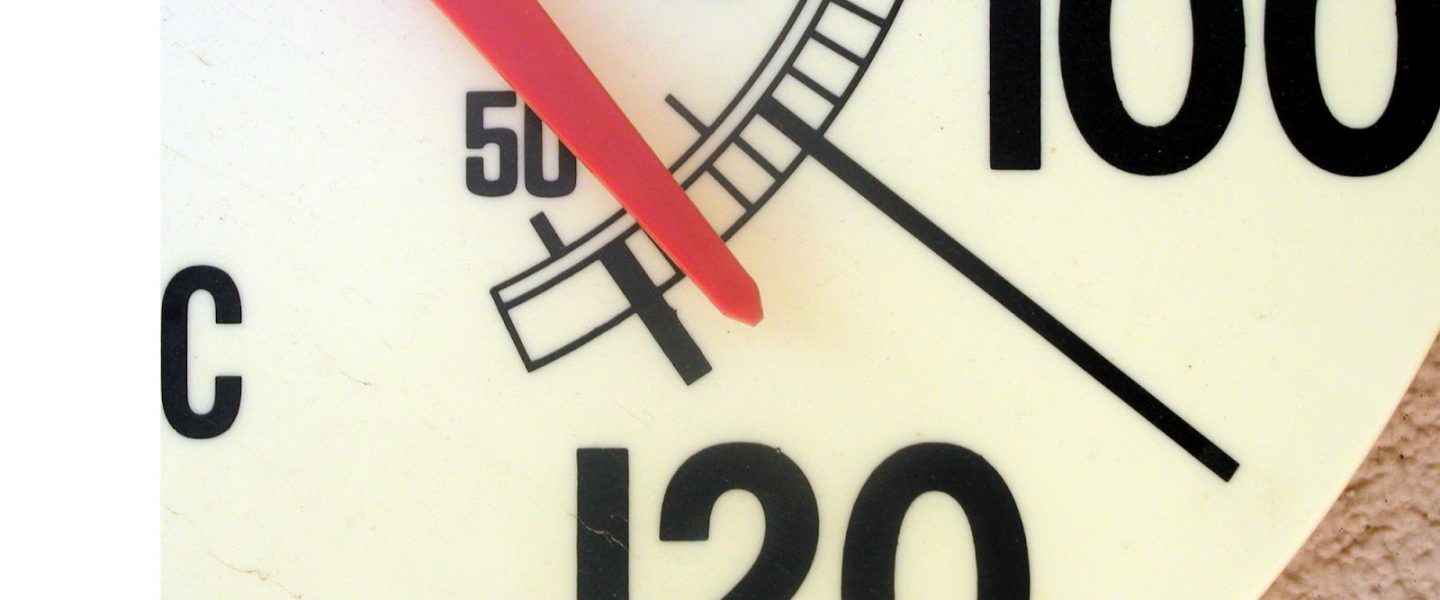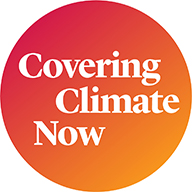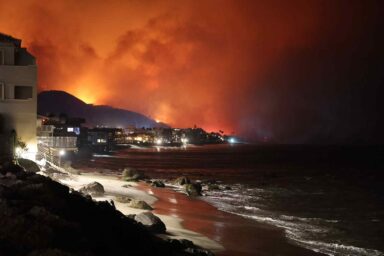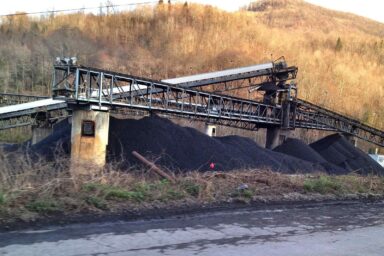A new type of disaster reporting is needed to keep up.
|
Listen To This Story
|
The cascade of climate extremes thus far this summer calls out for a new type of disaster reporting. Over the past month, reporters on the weather “disaster” beat could barely catch their breath in the face of the heat, floods, fires, the disturbances in ocean currents, and numerous other climate-related catastrophes.
Many a fine wordsmith has mastered the skills of on-the-scene description of such individual disasters. But traditional disaster reporting no longer seems adequate when such events are happening all at once.
We are really experiencing one big disaster. That bigger picture of simultaneous disasters is key to communicating the cresting wave of climate chaos. Pull on the story thread of 110-degree Fahrenheit days in Phoenix and you end up with rapidly melting glaciers in Antarctica. Follow the 12,000 flooded basements in Chicago after the recent deluge and you’ll get to the alarmingly warm ocean waters in Florida. Track the turbulent airplane travel that’s becoming ever more common and you’ll end up in the frighteningly tenacious wildfires in Canada.
Each may be quite different in form and separated by thousands of miles in location but they lead straight back to the same set of prompts from the same deranged climate system.
U.N. Secretary-General António Guterres argues that this summer is a turning point and suggests “global boiling” as the replacement for “global warming” starting now. What we’re seeing, he said, has unfolded according to the patterns long predicted by scientists — except for the “speed of the change.” That’s a rather key distinction.
It’s been the accelerating pace of simultaneous climate events that has been largely missing from the coverage. Sixteen scientists, led by James Hansen, the prophetic NASA astrophysicist who first alerted Congress to the impending climate cataclysm in 1988, recently warned that the speed of climate change’s most disruptive impacts is blowing past the data in the climate models.
The shifting patterns and slowdown of the Gulf Stream currents, known in scientific lingo as the AMOC, is a vivid example; that was supposed to occur around mid-century. One of the major contributing factors to that rewiring of ocean currents has been rapidly rising ocean temperatures, which in turn contribute to rising sea levels and more intense storms — like the unexpected deluge in New England that flooded Vermont’s capital of Montpelier and other cities. “[T]he models,” according to Hansen, et al., “need to be continually checked against the real world.”
Finding the Patterns
Here in the real world the question is: What is the consequence of reporting on disasters as if they’re individual emergencies?
Treating climate change-linked disasters as isolated events is like reporting on, say, a string of fatal car crashes over a week at the same treacherous turn on a newly constructed highway as if the shape of the highway had nothing to do with the crashes. Reporting on each individual accident offers little perspective into emerging patterns; nor does it compel an assessment of the highway’s design or the engineers responsible for them.
Similarly, reporting on one climate disaster without making at least reference to others triggered by similar causes ultimately does not provide the full picture that compels a harder look at the system driving them. Not every new disaster, of course, leads to the story of every other disaster. But this summer’s sequence of extremes has shined a light, like never before, on the need to show how one disaster echoes with another. The highly local experiences of people encountering one or another form of fossil fuel-triggered extremes are part of the larger picture, even if they look and are experienced differently (the changing climate’s first cousins, drought and flood, for example). Such connections can also highlight the stakes and identify more clearly who can be held accountable for such extremes.
Reporting each individual disaster separately also misses the fundamental reality behind them: When the fires finally burn out, when there are no more trees left (or basements to flood or glaciers to melt), the heat will continue rising. It doesn’t stop because there’s nothing left to burn. It only slows or stops when the quantity of fossil fuel emissions declines.
Most importantly, perhaps, each climate disaster has consequences that last long after the event itself. The disaster aftermath ripples into the adequacy, or inadequacy, of social safety nets; the degradation of ecological systems; the upheavals in business and the economy. There is ripe journalistic terrain after the embers fizzle out and the waters retreat.
Frequently, the reporting wanes along with the dramatic imagery. In fact, the stories in many ways begin at that point. What is the response, if any, aimed at preventing future catastrophes? Who gets protected? Who does not?
Such questions coming on the heels of disasters offer new reporting trails to follow into the difficult and vexing decisions facing local, state, and federal authorities. How high to build levees? How much should the fossil fuel companies be compelled to contribute to rescue and recovery efforts? How are all levels of government subsidizing the industries that are contributing to the upheavals and tragedies that accompany climate disasters?
Telling the full and ongoing story also raises the stakes on identifying, and holding accountable, those most responsible for the losses and the damages, which persist long after the extreme event has passed.
This story by Mark Schapiro was originally published by Capital & Main and is part of Covering Climate Now, a global journalism collaboration strengthening coverage of the climate story.





